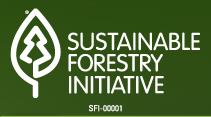 In my last post, I offered the first in what will be a short series of articles on the Sustainable Forestry Initiative Program (SFI) 5- year standard review process. The SFI program deserves a lot of credit for conducting such an open-handed, transparent process for updating the key standards that make up the heart and sole of their program. I feel strongly that those of us who have a stake in the outcome own them the best constructive feedback we can manage.
In my last post, I offered the first in what will be a short series of articles on the Sustainable Forestry Initiative Program (SFI) 5- year standard review process. The SFI program deserves a lot of credit for conducting such an open-handed, transparent process for updating the key standards that make up the heart and sole of their program. I feel strongly that those of us who have a stake in the outcome own them the best constructive feedback we can manage.
This second installment of my series is likely to be of particular interest to many regular readers. It addresses the most heavily-used of the SFI family of standards: Section 3 – the Chain of Custody standard. I have given the newly released draft a careful review and recorded my comments and suggestions in a table that you can download here: (SFIS.14-19 Section 3 commentary MW 2.25.14).
Overall Impressions
I shared my initial impressions soon after the draft was released in January. Those positive points are still worth calling attention to. The fact that SFI has taken the simple but important step of explicitly recognizing the CoC standard of its parent organization – the Programme for the Endorsement of Forest Certification (PEFC) – is certainly encouraging. The step is tentative (more on that below), but positive nonetheless. Also positive is the fact that SFI has – at long last – offered some meaningful language addressing Due Diligence and Controversial Sourcing. The new language is still a bit crude (more on that below, too), but far beyond the token coverage found in the 2010-14 version, which was – frankly – a bit of a joke.
Beyond the positive first impressions, I’m sorry to say the the new CoC draft standard remains disappointingly rough. My review uncovered a lot of awkward, unclear, and inconsistent language. Some of it is carried forward from the 10-14 version, but much of it is new. It is my hope that much of this can be cleaned up in the revision process, but I am concerned that some of the key problems of the old CoC standard might be carried forward another 5 years. And that would be a shame.
Here are a few of the key points that I believe are still in need of more work.
Certified Content
The SFI CoC standard is in desperate need of a clearly defined list of input categories which are acceptable for inclusion in a CoC-certified product. This need is addressed in the FSC standard with the term “Eligible Inputs”. It appears to be approximated by the new SFI CoC with the term “certified content” but the result so far is very, very unclear. The definitions section of the standard (Section 13) attempts to define this term, but the formatting makes it unclear what is and is not included. Worse still, the standard text seems to use the conflicting terms “certified content” and “certified forest content” almost interchangeably. The term “certified sourcing” is barely mentioned at all – despite the fact that it is the most common product claim in the SFI marketplace. I tried to capture every example of this in my comments table, but I probably missed a few. This badly needs to be cleaned up before the final version is released.
Identification at Delivery Level (2.2.1 vs. 3.2.1)
The SFI standard defines the requirements for verifying the certified status of input materials in two different places in the standard: once each in Part 2 & Part 3. This in itself is probably unnecessary, but worse still is that the 14-19 draft appears to provide two different standards for verification. This baffles me. Why should the basic verification protocols applied at purchase and receipt of certified products be different for manufacturing companies (who might apply complex CoC models) than for other companies who apply simple separation systems? I hope this is a simple oversight. If so, it needs to be fixed. If it is intentional, it needs to be explained and (in my view) reconsidered.
Due Diligence Details
I wrote earlier that I regard the new Due Diligence language in the 14-19 CoC standard to be a positive thing. It is, but it still needs a lot of work. Paragraph 3.7.1 “Process to Avoid Controversial Sources” reads like a laundry list of items that someone identified as needing to be included in a Due Diligence System (DDS). Unfortunately, the items don’t seem to relate well to one another, some of them are poorly written, and one (3.7.1.5) is more or less meaningless. This whole section can and should be re-written, using a straightforward, risk-based DDS format.
More to come
I am looking forward to attending a public meeting scheduled for this Thursday in Portland, Maine. I hope to see friends and colleagues there, and to engage in a productive discussion of this important topic.
I will also be preparing similar commentary on the new draft updates to the SFI Certified Sourcing system (Section 4). I will post them here, with a summary of my impressions, in the next week or so.
Please let me know what you thing of all this, and find a way to provide SFI with your own perspectives on the standard updates.